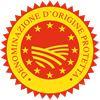Description
The Oignon Doux des Cévennes PDO is an onion which can be preserved for a long time, belonging to the species Allium cepa L. representing the variety of traditional sweet onions of Cévennes.
Production Area
The production area of the Oignon doux des Cévennes PDO showers over 32 municipal areas of the Gard department in the region of Languedoc-Roussillon.
Production Method
The bulbs are sown in a nursery on January 1st and left until March 15th and then on 15th April until 10th June, the seedlings are transplanted manually. The harvest begins considering the fall of 50% of leaves from August until September and it is carried out manually. After the harvest, onions are dried on the parcel or in a drier or combining the two methods. Once they are dried, the roots are cut and the damaged or detached covering membranes are removed. Onions are preserved in a dry and ventilated place or in a cold room.
Appearance and Flavour
The Oignon Doux des Cévennes PDO is pearly white, with big round bulbs having a bright colour, with fine and semitransparent tunics. The inner scale leaves are heavy and their flesh is white, medium hard and succulent. If the flesh is consumed raw, it is crispy, and it is characterized by its flavour which is not spicy and bitter and its delicate, balanced aroma. If it is cooked, it tastes velvety, succulent and sweet in the mouth, without bitterness, and with a chestnut and grilled aroma.
History
The origins of the Oignon Doux des Cévennes PDO production can be traced back to the tradition of sweet onion cultivation, which has been practised for two centuries in the geographical production area. Terracing for onion cultivation which is nowadays an integral part of the typical landscapes of this area constitutes evidence and testimony.
Gastronomy
The onions can be preserved fresh or dried. When fresh, they are preserved in a refrigerator for some days in the compartment with greater temperature proper for the preservation of fruit and vegetables. When dried, they can be preserved for some months if they are put in dark, dry, ventilated places. The Oignon Doux des Cévennes PDO is consumed raw, in salads; suitable to intensify its sweet and succulent taste, or combined with other vegetables and tomatoes. If it is consumed cooked, it is optimum to enrich several types of dishes. The local tradition proposes different variants of onion-based soups, with toasted bread and melted cheese. Some soups are spiced with clove, for example. Salted tartes made with cooked onions, eggs and cheese are particulary tasty and savoury.
Marketing
The product is sold as Oignon Doux des Cévennes PDO. It is marketed packed in nets of material used to preserve food, in sizes of half a kg to 5 kg of weight. The packaging has the identification code of the conditioner, the date of conditioning and the identification number of the concerning lot since onions conditioned after the 15th of May of the following year to the harvest year cannot benefit from the denomination.
Distinctive Features
The characteristics of Oignon Doux des Cévennes PDO are closely related to the weather and environmental characteristics of the production area. The presence of sandy soil, a drainage agent which does not favour the development of pests, the health conditions of microclimates and the cultivation of lands and terracing have favoured the cultivation of onion in this area in comparison with other terracing areas which have been cultivated for 50 years without interruption.







